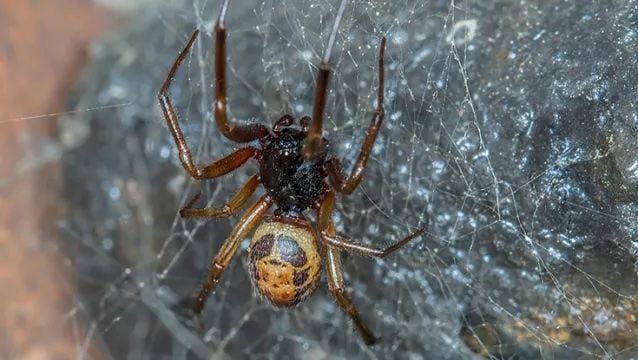False Widow spiders are 230 times more potent than any common Northern European spider, new research has found.
The research, conducted by NUI Galway, examined how the False Widow spider succeeded in spreading so successfully around the world, including to Ireland.
Over the past five years, the team at the Ryan Institute investigated the potency of its venom and compared it with the venom of some of the native spiders in Ireland.
It found that the spider possesses venom up to 230 times more potent than that of native Northern European species it routinely encounters in and around our homes.
This may explain why Noble False Widows can tackle a range of organisms much larger than themselves, including lizards, bats, shrews, and other spiders.
Invasive species
Originating from Madeira and the Canary Islands, the Noble False Widow spider has the potential to become one of the world’s most invasive species of spider.
The study found that the Noble False Widows can make calculated decisions on whether to attack large or small prey depending on how much venom is left in their venom glands.
If little venom is available, they avoid facing large opponents that could injure them, and instead focus on small prey.
Scientists also demonstrate that in a battle, the Noble False Widow does not inject its venom randomly, but instead targets the most innervated body parts of its enemy, where the neurotoxic venom is most efficient.
Overall, the Noble False Widow spider killed and ate 95 per cent of its opponents over the course of the study.
The Noble False Widow is known for its medical significance, having the ability to cause a range of mild to severe symptoms in people who are bitten, but little is known about its ecological impact on native species.
Dr Michel Dugon, who led NUI Galway’s Venom Systems Lab and senior author of the student said: “Over the years, we have learned a lot about the Noble false widow and its venom. This study is another important step to understand the true impact this species has on the ecosystems it invades throughout the world.”
Dr John Dunbar, Irish Research Council Post-Doctoral fellow, Venom Systems Lab, Ryan Institute, NUI Galway and co-senior author of the study, said: “The Noble False Widow spider is a truly remarkable animal; at every turn this species has surprised us in its ability to become globally invasive and dominate habitats it occupies.
"The tiniest amounts of venom - about 1,000th of a raindrop - can cause medically significant symptoms in humans that are about 250,000 times larger than them. Each new study brings us closer to understanding how exactly they are achieving their success.”
The Noble False Widow was first reported in southern England in 1879. In recent decades it has increased its range and population density, spreading northwards towards Scotland and westward through Wales and Ireland. In that time the species has also spread globally across Europe, East Asia, North America, and South America.







